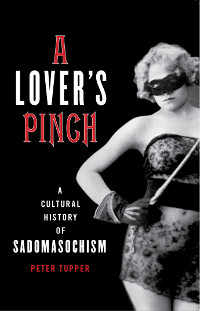Gray, Francine du Plessix. At home with the Marquis de Sade: A life Simon and Schuster, 1998.
To the Lieutenant General of Police:
Show me the legal code which dictates that fantasies executed with whores earn a gentleman tortures as long and arduous as mine! … There is no statute against what I have done… which condemns a man… to be treated which such inhumanity.
Pray, sir, tell me if the Messalinas, the Sapphos, the incestuous, the sodomites, the public and private theives… who constitute that respectable Montreuil family of which you are the slave– all knaves, whom I’ll introduce you to whenever you wish– tell me, pray you, if any of them have suffered the tortures I’ve been victimized with for thirteen years…. Isn’t it because they had money and whores to offer the judges?… Cease, sir, cease the consummate injustice you have singled me out for….
May the Eternal One someday reject you with the brutality with which you have rejected me.
Sade wrote that letter in 1785, his eighth year of continuous incarceration. Many aspects of his character comes through in that excerpt: his hyperbole, his paranoid sense of persecution, his literacy and way with words.
The author has chosen the difficult task of trying to tell a coherent narrative about Sade. This is difficult because Sade’s accounts of himself are very unreliable, full of self-inflating boasts and self-preserving lies to please the current regime. To understand his life, you have to look at the people around him: the father who had little interest in him, the mother who abandoned him, the uncles and aunts who spoiled him rotten, his inexplicably loyal wife, his formidable mother-in-law who had him incarcerated to preseve the family fortune, the various servants and staff who enabled him, the prostitutes who were both mistreated by him and saw him as as opportunity to exploit him, and the police who watched him for years.
Those police reports give a strange insight into Sade, including the revelation that the original sadist was just as much a masochist, at least physically. (Rather than being polar opposites, Sade and Sacher-Masoch had a lot in common.) In the 1763 incident with Jeanne Testard, a 20-year-old fanmaker and casual prostitute, Sade ordered her to whip him. Sade’s little chambre was full of props, including a chalice he masturbated into, ivory crucifixes hanging alongside pornographic prints and drawings, rods, cat-o’-nine-tails, pistols and a sword. He told her to utter sacreligious lines and perform sacriligious acts, like a apostate theatre director.
The Easter Sunday incident of 1768 is what really brought Sade to the attention of the authorities. He brought a 36-year-old unemployed cotton spinner named Rose Keller to one of his residences in Paris on pretext of hiring her for housework. He threatens her until she undresses, and is upset when she resists him. He holds her down, then beats her alternately with a rod and a cat-o’-nine-tails, mixed with the application of hot wax. When Keller begs him to stop so she won’t die without having done her confession, Sade said she could confess to him.
Until I read the above excerpt, I had written Sade off as a classic controlling abuser. This forced me to reevaluate him slightly. We know that Sade had a life-long interest in the theatre; he acquired a taste for drama, as well as for corporal punishment and probably sodomy, from the Jesuits. The Easter Sunday incident shows Sade’s pickiness about costuming, as well as an example of anti-Catholic parody. Even Keller’s escape from a window via knotted bedsheets has a dramatic flair.
Were these scenes something Sade had fantasized about for years before he acted them out with working women like Testard and Keller? It seems to me they were. Obviously, Sade had no idea about modern ideas of consent, and he was too much of a narcissist and an aristocrat. He had a low regard for prostitutes and was mortally offended that the official reason for his incarceration was mistreatment of them.
Sade’s phrase, “fantasies executed with whores”, suggested that what he was doing with them was not literal, but a form of play. The mise en scene was not so much about the act of hurting or being hurt, but performing Sade’s private ritual. Granted, Sade was always ready to say what was necessary to save his own skin and charm people into staying with him. He was also clearly an obsessive-compulsive, obsessed with numbers, and his compulsive swearing and blaspheming suggests something like Tourette’s syndrome. But I suspect there was something ludic, game-like or play-like, in his actions.
Thus, there actually may be a link, however tenuous, between Sade and the modern BDSM culture.


